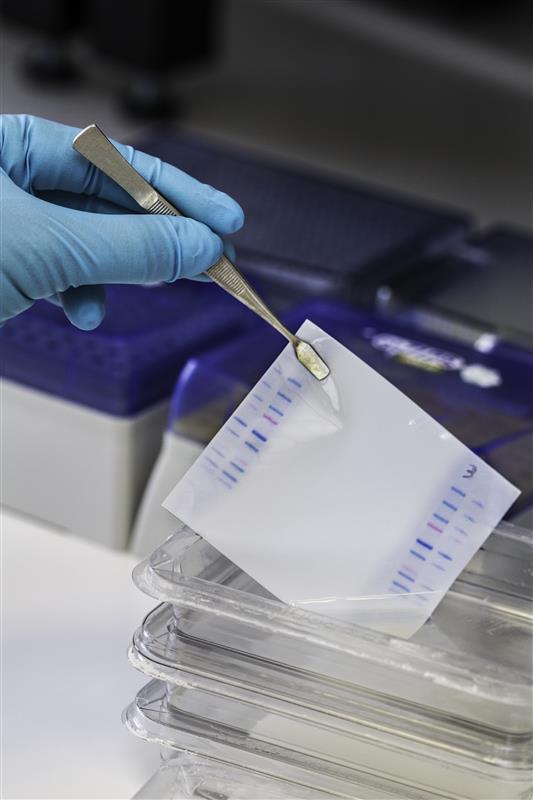Introduction
Search Engine Optimization (SEO) is the process of increasing the quality and quantity of website traffic through non-paid search engine results. According to a 2024 HubSpot study, 75% of searchers never go past the first page of search engine results. If your life sciences company isn’t ranking highly, you’re missing out on potential customers.
For businesses in life sciences and biotech, SEO is an important digital marketing tool. It helps improve online visibility and will generate more leads. This guide will help you understand how to optimise your biotech website for search engines and improve your online presence.
How Search Engines Work
Search engines like Google, Bing, Yahoo, and Baidu use web crawlers (also known as “bots” or “spiders”) to read and index website content. These crawlers analyze your website’s text, structure, and links to determine your page’s relevance and authority.
Google will analyze the text, images, and other files on the page. The system will then store the information in the Google Index, a large database. When a user then searches on Google, Google returns information that’s relevant to the user’s query.
The pages shown in the search engine results page (SERPs) are the ones Google thinks are the best quality. They are also the most relevant to what the user is looking for. Many factors determine this, but to help improve your website’s search rankings, your website must:
- Be easily readable by search engine crawlers
- Include relevant, high-quality content
- Be optimized for both desktop and mobile users
- Have strong backlinks from reputable sources
One consideration is that search engines cannot read text embedded within images. Adding alt tags to images is important. They help crawlers understand your visuals and improve accessibility.
For life science companies with extensive product pages, optimizing scientific images with accurate alt tags is essential. Properly labelling images, such as ELISA graphs or Western blot results, helps Google interpret the content, improving search visibility.
Descriptive alt text also improves accessibility. It helps all users, including those with screen readers, understand the image’s context. This helps with SEO and improves user experience. It makes complex scientific data easier for more people to understand.

Suggested Alt text: Western blot showing protein bands.
Conducting an SEO Audit
Before optimizing your site, conduct an SEO audit to identify urgent issues. This helps benchmark your current performance and track improvements over time.
SEO Audit Tools:
- Google Search Console – Shows search rankings, indexing issues, and performance data
- Google Analytics – Tracks user behavior and keyword performance
- SEMrush, Ahrefs, and Moz – Comprehensive SEO analysis tools
Pivotal Scientific provides a paid SEO audit with SEMrush. This audit gives insights into page speed, broken links, metadata issues, and more. This report is also FREE as part of your PSL Alliance membership so please speak to your account manager if interested.
On-Page vs. Off-Page SEO
As mentioned above, Google prioritizes showing the most relevant search results for each query. Therefore, content should always be written with users first, and SEO techniques should be applied to ensure it gets found. SEO is divided into two main areas:
- On-Page SEO – Optimizing the content, structure, and HTML elements of your website
- Off-Page SEO – Gaining backlinks and external signals that improve your website’s authority
On-Page SEO
On-page optimisation involves structuring your website correctly and using the right keywords in key areas:
- Title Tags – The main title that appears on search results
- Meta Descriptions – A short summary that influences click-through rates
- Headings (H1, H2, etc.) – Organize content in a logical structure with subheadings
- URL Structure – Ensure URLs are clean and descriptive
- Internal Linking – Link to relevant pages within your website
Off-Page SEO
Off-page SEO focuses on increasing your website’s credibility by obtaining backlinks from other reputable sources. In the life sciences sector, peer-reviewed publications, biotech industry blogs, and university websites are valuable sources of high-quality backlinks.
Core Web Vitals & Mobile Optimization
Google’s shift to mobile-first indexing means it primarily evaluates a site’s mobile version for rankings. Desktop is still the most popular device for browsing life science websites. However, mobile usage is increasing. Some biotech websites say that up to 40% of their traffic comes from mobile users. This is based on what we see on client websites.
To stay competitive, companies must ensure a seamless mobile experience while also optimizing for Core Web Vitals—metrics measuring loading speed, interactivity, and visual stability. You can analyze these in Google Search Console. You may need to work with a web developer to improve performance.
Google ranks websites based on Core Web Vitals, which measure:
- Largest Contentful Paint (LCP) – How fast your main content loads
- Interaction to Next Paint (INP) – How responsive your page is
- Cumulative Layout Shift (CLS) – How stable your content layout is
Since Google follows a mobile-first approach, poor mobile optimization will negatively affect both mobile and desktop rankings.
Keyword Research for Life Sciences Companies
Effective SEO for life science companies begins with understanding the keywords and phrases your audience is searching for. Your target audience may want a specific product, like an antibody. You can improve product pages for this. They might also be looking for information on applications or diseases. You can cover these topics in blog posts.
By aligning your content with these search queries, you can answer key questions and highlight how your products solve problems. Life science companies must balance industry-specific terminology with search-friendly language to maximize visibility.
Types of Keywords:
- Short-Tail Keywords – General terms (e.g., “antibodies”)
- Long-Tail Keywords – More specific terms (e.g., “monoclonal antibodies for cancer research”)
Example: A company selling PCR kits may target long-tail keywords like “PCR kits for COVID-19 testing” rather than just “PCR kits”.
Targeting long-tail keywords allows you to reach a more specific audience, increasing the chances of higher conversion rates. These keywords generally have less competition, making it easier for newer websites to rank compared to broad terms like “PCR” or “Antibodies,” which are dominated by established companies like Thermo Fisher or Abcam. While search volume may be lower, the quality of traffic can be higher.
Optimizing pages for conversion is just as important as driving traffic. Ensure your website has clear CTAs—whether it’s contact forms, videos, or downloads—to encourage user engagement.
SEO isn’t just about attracting visitors; it’s about guiding them toward meaningful actions once they arrive. Set clear goals and organize your pages to guide users toward actions. This could be signing up, buying something, or asking for more information.
Recommended Keyword Research Tools:
- Google Trends – Shows keyword popularity over time
- Google Keyword Planner – Provides search volume data
- Ahrefs & SEMrush – Advanced keyword research tools
Once you have identified the best keywords, place them strategically in:
- Page Titles
- URLs
- Meta Descriptions
- Headings (H1, H2, etc.)
- Image Alt Text
Example: Do you have two blogs on IHC troubleshooting that are triggering duplicate content errors? Instead of competing with yourself, think about combining them into one complete guide. You could break them into a structured troubleshooting series.
Each piece of content should focus on a specific topic. This series could discuss several topics. These include weak or no staining, false-positive or false-negative signals, high background noise, and non-specific staining.
Similarly, canonical tags are highly useful for life science websites. Many product types, like antibodies, have several pages for different sizes. For example, they come in 1 mg, 5 mg, 25 mg, and 50 mg. Ideally, we should list all options on one product page, but this isn’t always feasible with website budgets.
Using a canonical tag helps you tell Google which page to prioritize in search results. This prevents competition between your product listings and improves SEO.
Technical SEO for Life Sciences Websites
Technical SEO ensures that search engines can properly crawl and index your website. Key areas to focus on include:
- 404 Errors – Fix broken links or use 301 redirects
- Duplicate Content – Avoid content that competes for rankings
- Canonical Tags – Tell search engines which version of a page to prioritize
- Robots.txt & Sitemap – Ensure search engines can properly access your site
Google PageSpeed Insights can help identify areas where your website’s speed can be improved.
Example: Have two blogs focused on IHC troubleshooting causing duplicate content errors to be flagged up? Review the content and create one detailed blog. Alternatively, break it into a series of helpful troubleshooting blogs. Each blog can cover common problems. These include:
- Weak or no staining
- False-positive signals
- False-negative signals
- High background
Non-specific staining Canonical Tags can be very useful for life science websites because some product categories have several individual product pages for different-sized products, e.g. antibodies but are available in 1 mg, 5mg, 25mg, and 50 mg.
The best user experience is to have one product page with the different sizes options listed, but this can be costly. You can use the canonical tag to tell Google which product to show in search results. This helps limit competition between your product pages. You may need to speak to your web developer for help implementing this change.
Content Marketing & SEO
Content marketing is a key pillar of SEO, involving the consistent creation of valuable, audience-focused content. Boosting search rankings is important.
However, content should mainly help your target audience. It should answer their questions or solve their problems. This page offers insightful self-assessment questions to help refine your content strategy.
For life science companies, high-value content could include:
- Research articles and whitepapers
- Product guides and educational resources
- Case studies and success stories
- Troubleshooting tips for scientific workflows
E-E-A-T: Building Trust & Authority
Google evaluates websites using E-E-A-T, which is detailed below. This framework helps Google’s human reviewers check content quality. While it is not a confirmed factor in Google’s ranking, the framework should be used to guide content writers when producing content for the website. It encourages them to create useful content for their target audience.
When writing new content (or updating old content) follow the below framework:
- Expertise – Demonstrating knowledge in your field
- Experience – Providing first-hand insights and case studies
- Authoritativeness – Earning credibility through backlinks and citations
- Trustworthiness – Ensuring website security and transparent content
Example: For life sciences companies, peer-reviewed content, regulatory compliance, and industry certifications contribute to a strong E-E-A-T profile. Also, including if the author has a PhD in Molecular Glycobiology biology for example. They would be considered highly experienced and expert in topics related to glycan structures.
Tracking SEO Metrics for Continous Improvement
SEO for life science companies is an ongoing process that requires continuous monitoring and optimisation to maintain and improve performance. By regularly tracking important SEO metrics, life science companies can learn how their audience interacts with their content. They can find out which keywords bring in the most traffic. They can also see how their site ranks compared to competitors. This data-driven approach enables informed decision-making to enhance online visibility and achieve business objectives.
In the life sciences sector implementing a continuous SEO strategy is essential. Regularly updating content, optimizing for new keywords, and adapting to algorithm changes help maintain and improve search rankings. By staying proactive and responsive to these dynamics, life science companies can ensure sustained online visibility and engagement.
To effectively monitor SEO performance, several tools are available:
- Google Analytics: Offers insights into website traffic, user behaviour, and conversion rates.
- Google Search Console: Provides data on search performance and site visibility.
- SEMrush, SE Ranking, and Ahrefs: Deliver comprehensive SEO analytics, including keyword rankings, backlink analysis, and competitive research.
Utilizing these tools can be particularly beneficial in the life sciences sector, where the competitive landscape is complex and dynamic. By leveraging these resources, companies can make informed decisions to optimize their SEO strategies and maintain a competitive edge.
Final Thoughts
SEO is a powerful tool for life sciences companies looking to improve their online visibility, attract more customers, and establish authority in their industry. By optimizing technical SEO, conducting keyword research, producing valuable content, and building high-quality backlinks, your company can improve its search rankings and drive more targeted traffic.
Need help with SEO for life sciences? Pivotal Scientific offers expert SEO audits and strategies to help you rank higher and attract more customers. We combine Phd content writers with digital marketing experts to ensure we produce quality content.



